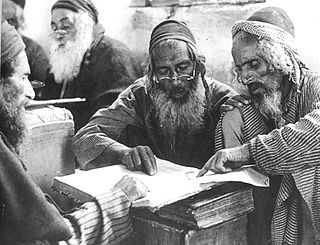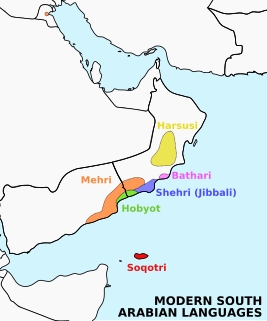 W
WArabic is a Semitic language that first emerged in the 1st to 4th centuries CE. It is now the lingua franca of the Arab world. It is named after the Arabs, a term initially used to describe peoples living in the Arabian Peninsula bounded by eastern Egypt in the west, Mesopotamia in the east, and the Anti-Lebanon mountains and Northern Syria in the north, as perceived by ancient Greek geographers. The ISO assigns language codes to 32 varieties of Arabic, including its standard form, Modern Standard Arabic, also referred to as Literary Arabic, which is modernized Classical Arabic. This distinction exists primarily among Western linguists; Arabic speakers themselves generally do not distinguish between Modern Standard Arabic and Classical Arabic, but rather refer to both as al-ʿarabiyyatu l-fuṣḥā or simply al-fuṣḥā (اَلْفُصْحَىٰ). Modern Standard Arabic is an official language of 26 states and 1 disputed territory, the third most after English and French.
 W
WḤaḑramautic or Ḥaḑramitic was the easternmost of the four known languages of the Old South Arabian subgroup, of Semitic. It was used in the Hadhramaut and also the area round the Hadhramite capital of Shabwah, in what is now Yemen. The Hadramites also controlled the trade in frankincense through their important trading post of Sumhuram, now Khor Rori in the Dhofar Governorate, Oman.
 W
WYemenite Hebrew, also referred to as Temani Hebrew, is the pronunciation system for Hebrew traditionally used by Yemenite Jews. Yemenite Jews brought their language to Israel through immigration. Their first organized immigration to the region began in 1882.
 W
WHobyot is one of the six Modern South Arabian languages (MSAL), a group of South Semitic languages spoken in the southern Arabian Peninsula. A severely-endangered Semitic language on the verge of extinction, it is spoken in a small area between Yemen and neighboring Oman. The speaking population is estimated to be about 1000 in Oman and 40 in Yemen, though the true number may be less.
 W
WMehri or Mahri is the most spoken of the Modern South Arabian languages (MSALs), a subgroup of the Semitic branch of the Afroasiatic family. It is spoken by the Mehri tribes, who inhabit isolated areas of the eastern part of Yemen and western Oman, particularly the Al Mahrah Governorate. Up to the 19th century, speakers lived as far north as the central part of Oman.
 W
WThe Modern South Arabian, or Eastern South Semitic languages, are a group of endangered languages spoken by small populations inhabiting the Arabian Peninsula, in Yemen and Oman, and Socotra Island. Together with the modern Ethiopian Semitic languages, the Western branch, they form the South Semitic sub-branch of the Afroasiatic language family's Semitic branch.
 W
WSoqotri is a South Semitic language spoken by the Soqotri people on the island of Socotra and the two nearby islands of Abd al Kuri and Samhah, in the Socotra archipelago, in the Guardafui Channel. Soqotri is one of six languages that form a group called Modern South Arabian languages (MSAL). These additional languages include Mehri, Shehri, Bathari, Harsusi and Hobyot. All are spoken in different regions of Southern Arabia.
 W
WYemeni Arabic is a cluster of varieties of Arabic spoken in Yemen, southwestern Saudi Arabia, Somaliland, and Djibouti. It is generally considered a very conservative dialect cluster, having many classical features not found across most of the Arabic-speaking world.